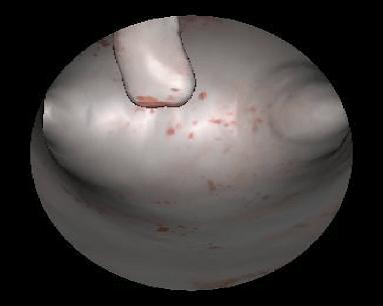Participants:Matthias Harders, Raimundo Sierra, Janos Zatonyi, Rupert Paget, Dominik Szczerba, Gabor Székely
| Partner: |
Computer Graphics Laboratory, ETH Zürich |
|
Institute of Biomechanical Engineering, ETH Zürich
Institute for Mechanical Systems, ETH Zürich
Institute of Computational Science, ETH Zürich
Micromachines and Precision Instrumentation Lab, EPFL Lausanne
Clinic of Gynecology, Dept. OB/GYN, University Hospital Zürich |
 Objective:
Hysteroscopy is the second most often performed endoscopic procedure in
gynaecology and is mostly part of any specialization program for gynaecology.
It is to be expected that training on a reasonably realistic simulator could substantially contribute to reduce the rate of complications. The simulator
will allow realistic real-time visualization of the intervention scene
including changes due to surgical actions and the control of the hydrometra
by manipulating the liquid influx and efflux as well as realistic tactile sensation.
Objective:
Hysteroscopy is the second most often performed endoscopic procedure in
gynaecology and is mostly part of any specialization program for gynaecology.
It is to be expected that training on a reasonably realistic simulator could substantially contribute to reduce the rate of complications. The simulator
will allow realistic real-time visualization of the intervention scene
including changes due to surgical actions and the control of the hydrometra
by manipulating the liquid influx and efflux as well as realistic tactile sensation.
The following components provided by all partners will be integrated
into the simulator:
- Mechanical modeling module based on basic components for tissue deformation calculation and real-time cutting
- Specialized force-feedback instrument emulating the hysteroscope
- Visualization algorithms for reasonably realistic presentation of the interventional field
- Generation of anatomical models for the simulation, covering a possibly large range of pathologies
Clinical evaluation will be carried out in order to gain insight into which level of realism is needed to actually reach the goals of efficient surgical training on VR-based trainer, with special emphasis on visual fidelity and the presence and quality of force feedback.
Please also have a look at a former surgery simulation project in our lab.
|
|